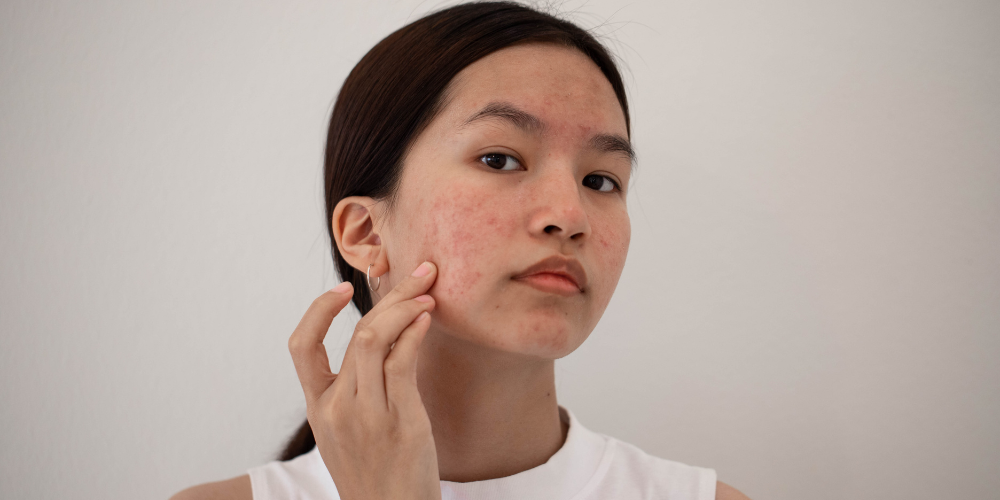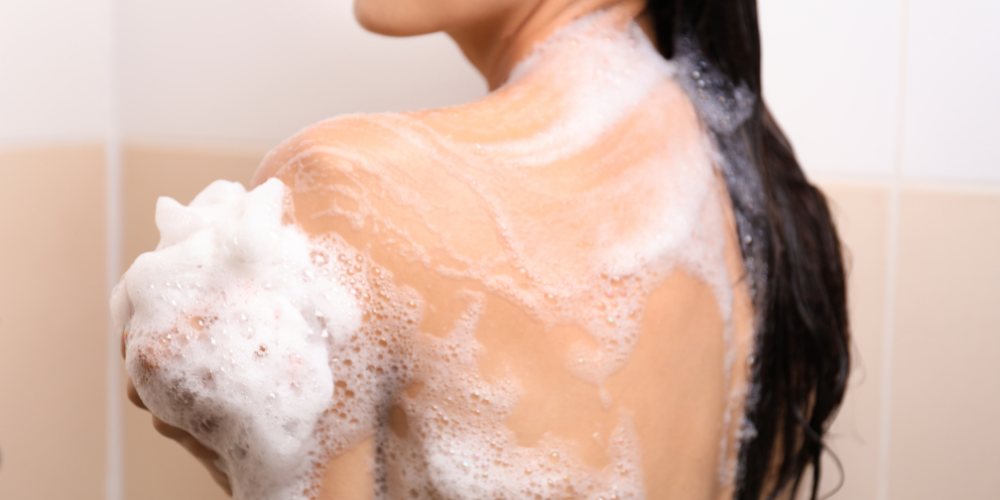
If you’ve ever experienced acne, you know just how hard it can be on your confidence, but it’s important you don’t let it stop you from living your best life — you’re still beautiful!
The red, inflamed bumps can be painful when touched or when you change your facial expressions, and covering them up with makeup isn’t much fun. For those who are struggling with acne, being able to differentiate between the types can improve your skin as the causes and treatments vary between them.
Fungal acne, more professionally known as malassezia folliculitis, is a reaction to the overgrowth of malassezia yeast on your face, or anywhere else on your body. Fungal acne bumps are usually the same in size and can be itchy, much more itchy than the other forms of acne spots. It is often misdiagnosed as acne vulgaris as the clusters of red, pus-filled bumps look very similar. But in reality, fungal acne is in a category of its own, with different triggers and treatments.
What differentiates fungal acne from other types?
The most common types of acne include hormonal acne, blackheads and whiteheads, fungal acne, papules, acne vulgaris (pus-filled bumps), and deeply rooted acne nodules and cysts. Each of these types has their own defining characteristics. For example, blackheads are often found around your nose and chin and look like teeny, tiny black dots. On the other end of the spectrum, acne nodules and cysts are large in size, painful, grow under the skin, and leave deep scars that often require medical procedures to fade.
Fungal acne isn’t caused by improper face-washing practices or hormones. However, neglecting to wash your face thoroughly once or twice a day can contribute to the problem. Instead, fungal acne is caused by irritation or damage to a hair follicle (on your face or on your body), causing inflammation, and allowing germs to enter, which can lead to the overgrowth of yeast. Fungal acne typically occurs on the face or other sebum-rich areas on the body, like the chest, back, and shoulders. And while it can strike at any age, fungal acne likes to pop up in adulthood, especially in young males.

How to avoid fungal acne?
There are several things one can do to avoid developing fungal acne. To start, wearing breathable fabrics can expose your body to much-needed airflow, especially in warmer environments. This will ensure your body doesn’t turn into a breeding ground for fungus and other bacteria.
It’s also incredibly important to shower after sweating and to follow a balanced diet that’s filled with vegetables, fruits, and whole grains. Yeast loves sugary carbohydrates, so a diet rich in candy, baked goods, and processed foods won’t be doing your skin any good. Lastly, a natural dandruff shampoo can be used on the infected areas once a week as this can be effective in reducing the amount of yeast found in your follicles.
If you choose to go the dandruff shampoo route, be sure to pay attention to the ingredients listed on the back to avoid exposing your body to harmful chemicals.
The Think Dirty App and its “search by ingredient” function can help you find a product that contains the specific ingredients that may clear up your fungal acne. Ingredients like pyrithione zinc, green tea, sulphur, and azelaic acid can be beneficial in reducing the clusters of fungal acne that won’t seem to leave you alone.
The bottom line
Even though all types of acne can take a toll on your self-confidence, it’s crucial to treat yourself with compassion and realize that many people are sharing the same struggles. Try not to get discouraged when trying to find a treatment that works for you as it could take some time — what works for one person may not work for another.
In the meantime, try to improve your diet by incorporating foods rich in vitamins A and D, stay hydrated, opt for natural and gentle skincare and body products, and keep your skin as clean as possible. This is particularly important during the warm summer months as we are sweating more than usual.
Disclosure: We are a professional review and product rating website and mobile app that receives compensation from the companies whose products we review and rate. We are independently owned and the opinions expressed here are our own interpretations of a trusted source.
No Fun at All: What is Fungal Acne and How Can You Treat It? was originally published in Think Dirty on Medium, where people are continuing the conversation by highlighting and responding to this story.